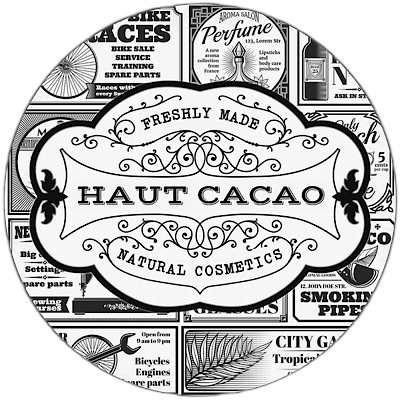This superfruit is mostly used in herbal medicines due to the presence of compounds like phenols, flavonoids, tannins, and triterpenes. In addition to its health benefits, the myrica fruit is also used in traditional Chinese medicine to treat a variety of ailments, including diarrhea, fever, and coughs. The fruit is believed to have cooling properties and can help to reduce body heat and inflammation. There have been a few studies regarding the different medicinal properties of Myrica. This superfruit contains Myricetin, a known analgesic. The essential oils of the fruit of Myrica gale have been shown to exhibit anti-fungal activity against some food borne fungus. There are also reports of its antioxidant effect due to high levels of anthocyanins.
fruit tallow vs wax
When I looked into the harvesting of candelilla wax and the processing of it, the present methods are dangerous to the workers and abusive to the animals used to carry the plants on their backs. It is also harmful and exploitative to the plant and to the environment. The whole operation seems incredibly unsustainable and archaic. It reminded me of the sick feeling I got in my stomach when I started researching the origins of mica and titanium dioxide. Not only were chemicals like chloroform and sulfuric acid very concerning in the wax-refining process, more waxes are being blended together now so it is very difficult to ensure purity. Over time, the wax would cause the texture of my products to change. That is why I went 100% wax-free.
I am excited to be using myrica fruit tallow in my concealing cream, cream tints, nutrition balms, and cream shade-changers because it does not go through the same intense processing and chemical refining process that is done to natural plant waxes. It is also an alternative to animal tallow. As I have noted above, what’s healthy for the skin is often just as healthy for the hair and scalp and I have been experiencing that firsthand. I am working on some extra-nourishing + multitasking hair products infused with this beautiful fruit tallow so stay tuned….
The fruit’s tallow is found on the small grey-green berries. Depending on the species, the berry can contain up to 30% wax; these surface lipids are 10 fold more abundant than any other plant species. The wax doesn’t accumulate on the fruit proper, instead it gathers on the bay berry knobs on the outer skin (exocarp). Its fatty acid profile indicates that it is not a wax, but more of a hard butter or vegetable ‘tallow’. On the other hand a wax is defined as hydrophobic organic compounds which comprise long alkyl chains. This berry tallow is different from plant waxes as it contains saturated triglyceride (triaglycerol/TAG) and diglyceride (diaglycerol/DAG) with palmitate and myristate as the dominant acids.
how does it effect the texture of a makeup formula?
You may not even notice a difference in the texture, but one benefit if you live in a hot climate is that it keeps my formulas from melting in direct sunlight as this creamy, buttery fruit tallow has a higher melting point than my raw cacao butter. It also has many incredible healing properties for anyone suffering from breakouts, sensitive skin, and other skin concerns. The benefits for skin go far beyond any plant waxes I have worked with. Also, the natural scent is evidence of this fruit being rich in terpenes – soooo good for skin + calming to the nervous system. It is a beautiful scent I have smelled before when I was little, similar to the forest-like scent of my raspberry elixir. Myrica fruit tallow also creates a little more staying power in humid climates as the texture is a cream-to-powder feel. The cost of wax is much more inexpensive as well which is why you will not find this superfruit tallow being used in mainstream makeup lines.
Myrica Tallow Fatty Acid Profile
- myristic acid 58%
- Oleic Acid 1.3%
- Palmitic Acid 36%%
skin benefits
As with most berries, bayberry fruit is a rich source of antioxidants, some of which research has shown may play a role in helping to minimize bacterial infections. These antioxidant compounds also have soothing properties, and include proanthocyanidins, flavonoids, vitamin C, phenolic acids, and anthocyanins. In fact, research has shown this fruit can interrupt some of the pathways that drive acne-related inflammation (although it is not an acne treatment). In terms of premature aging, myrica fruit tallow plays a supporting role in helping to inhibit glycation, a process within skin’s surface where proteins improperly crosslink and lead to visible loss of resiliency.
Inflammation and pain
This fruit works as an anti-inflammatory by blocking the effect of enzymes that causes inflammation in case of injury. As a natural analgesic, it also reduces pain by blocking the pain signals towards the brain. These are also called pain killers or pain relievers. Bayberry is good for skin as it works as antibacterial, antiseptic, anti-inflammatory, good in healing, and works in acne and swelling. Contained in this unique fruit tallow there is higher levels of vitamins like carotene, riboflavin, and vitamin C, and thiamine. It is rich in antioxidants called oligomeric proanthocyanins that combat excessive free radical formation in the body. It is considered an herbal medicines due to the presence of compounds like phenols, flavonoids, tannins, and triterpenes. Bayberry contains a flavonoid called myricetin that has a potent antibiotic effect on the human body.
Ayurvedic uses
- Fever: People with fever can take a tea made from the herb.
- Cold: The fruit and the entire plant can also be used to make a tea that can help relieve cold symptoms.
- Hemorrhage: In the case of a hemorrhage, medicines with the plant Myrica Nagi as one of the ingredients have been shown to help a lot.
- Leucorrhea: Leucorrhea can also be cured by washing the delicate tisuues with a liquid made from the bark.
- Intestinal Disorders: Myrica fruit is also used to treat problems with the digestive tract.
- Asthma: Myrica fruit is also a great way to help people with asthma feel better.
- Bronchitis: It has also helped people with Bronchitis and other lung illnesses feel better.
- Teeth Disorders: To improve the teeth and gums, a paste made from the tree’s bark must be applied to them regularly.
- Wounds and Ulcers: Wounds and sores can also be taken care of with a paste made from the tree’s bark. It should be put on the affected spot every day.






